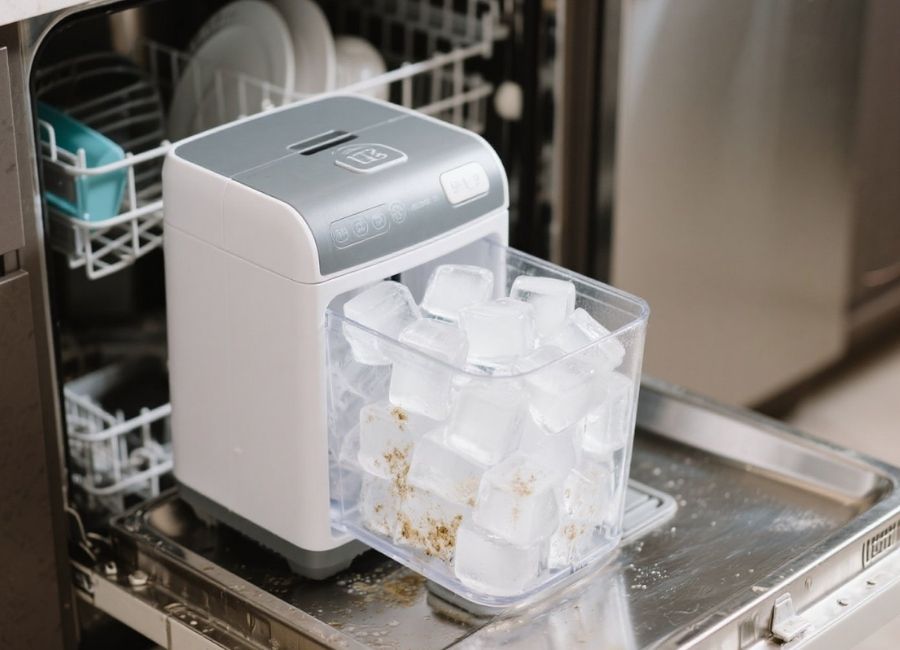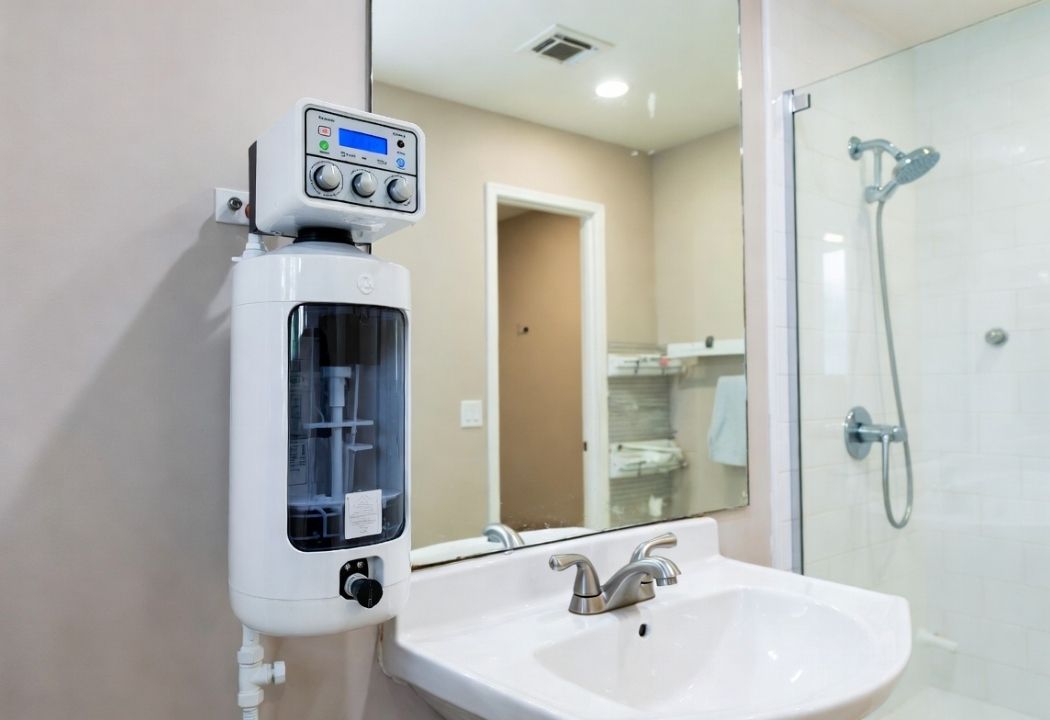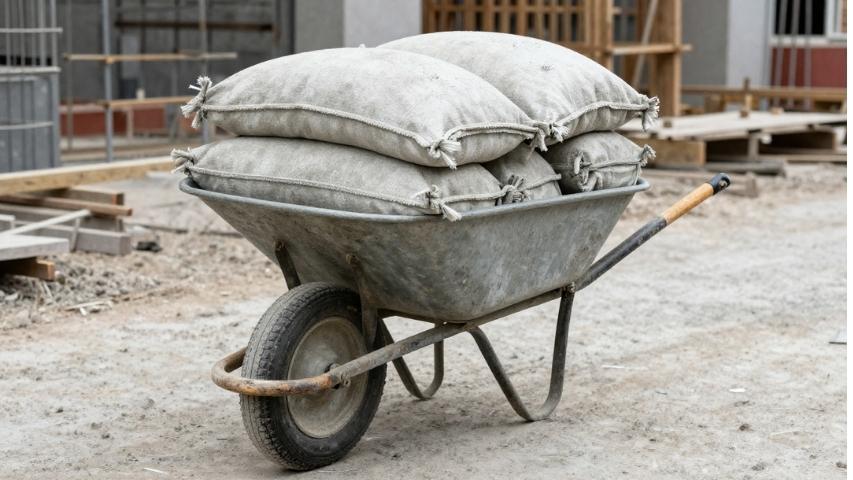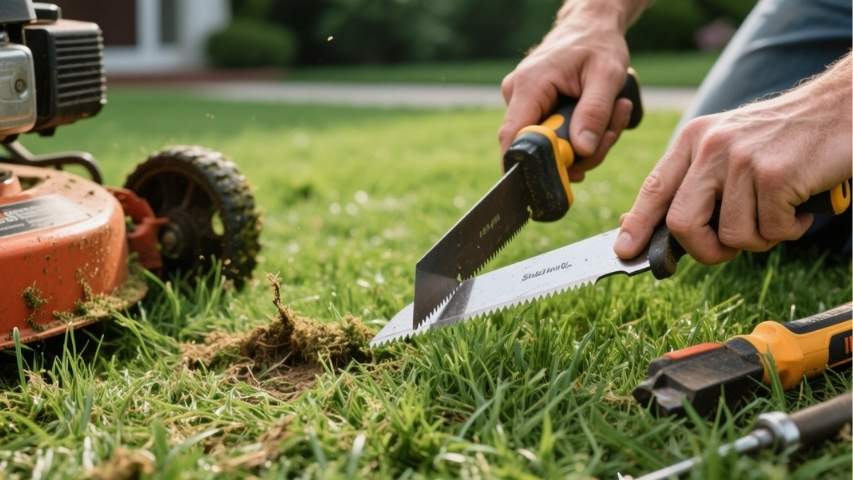Your countertop ice cube maker has been working overtime during the summer months, churning out crystal-clear cubes for refreshing drinks and keeping your family cool. But now it’s looking a bit worse for wear, with mineral deposits and grime building up in hard-to-reach places. The dishwasher seems like the perfect solution for a thorough cleaning, but is it safe?
The short answer is: it depends entirely on your specific ice maker model. While some portable ice cube makers are dishwasher-safe, many contain electrical components, delicate sensors, and materials that could be damaged by the high heat and harsh detergents used in dishwashers. Before you load that ice maker into your dishwasher, there are several crucial factors you need to consider.
This comprehensive guide will walk you through everything you need to know about safely cleaning your ice cube maker, whether that involves using a dishwasher or sticking to manual cleaning methods. You’ll learn how to identify dishwasher-safe models, understand the risks involved, and discover the best cleaning practices to keep your ice maker running smoothly for years to come.
Understanding Different Types of Ice Cube Makers
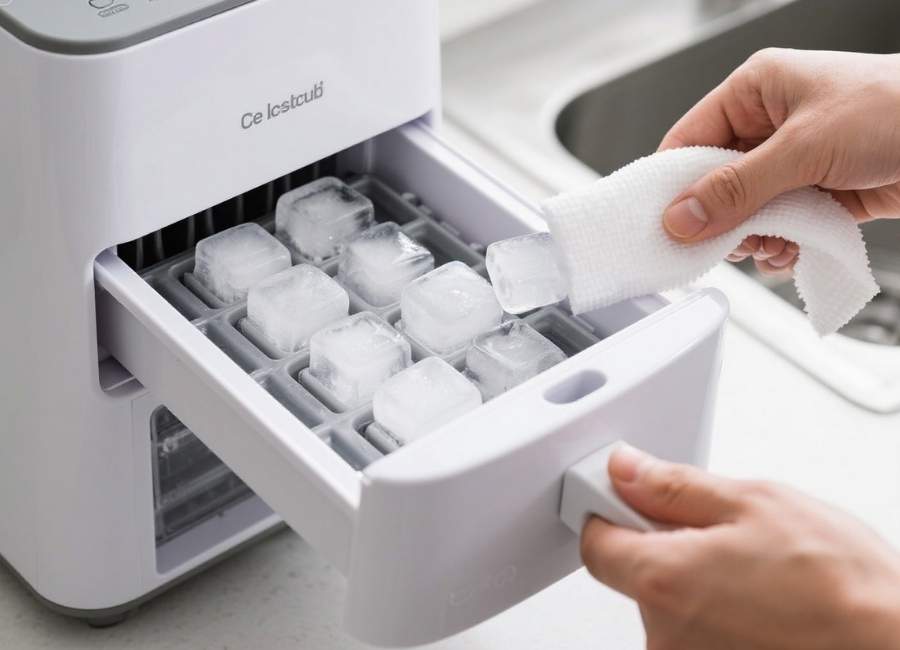
Not all ice cube makers are created equal, and understanding the type you own is the first step in determining the safest cleaning approach.
Portable Countertop Ice Makers
These compact units are the most common type found in homes. They typically weigh between 20 and 30 pounds and can produce ice cubes within 6 and 15 minutes. Most portable ice makers contain electronic components, water pumps, and refrigeration systems that make dishwasher cleaning risky or impossible.
Built-in Ice Makers
Found in refrigerators and some high-end appliances, these units are permanently installed and generally not removable for dishwasher cleaning. They require specialized cleaning procedures outlined in the manufacturer’s manual.
Commercial-Grade Ice Makers
These heavy-duty machines are designed for restaurants and businesses. They’re typically too large for home dishwashers and require professional cleaning methods.
Manual Ice Cube Trays
Traditional plastic or silicone ice cube trays are usually dishwasher-safe, but it’s always best to check the manufacturer’s recommendations first.
How to Determine If Your Ice Maker Is Dishwasher-Safe
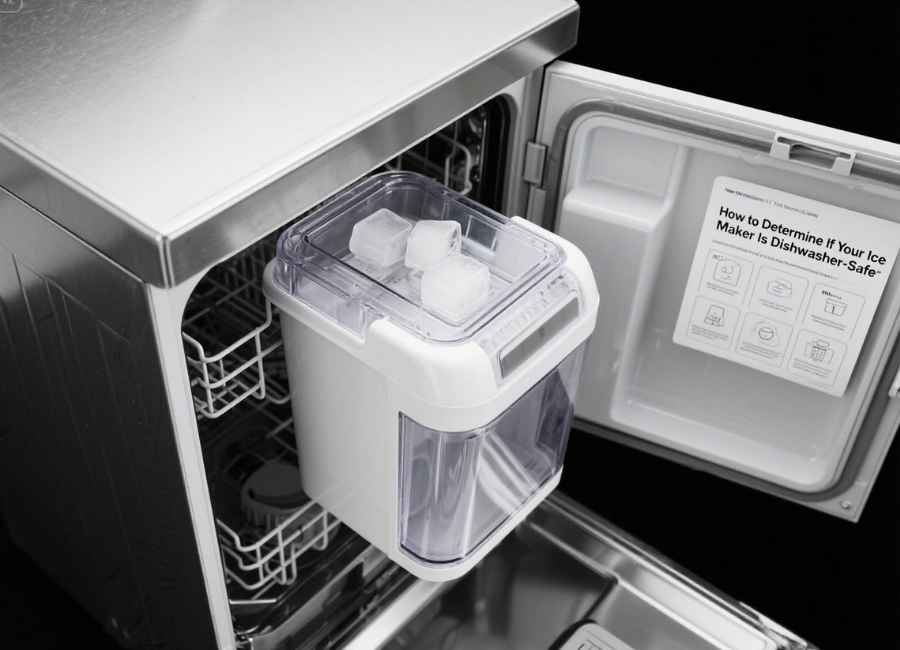
Before attempting to clean your ice cube maker in the dishwasher, follow these steps to determine safety compatibility.
Check the User Manual
The manufacturer’s manual is your most reliable source of cleaning instructions. Look for specific mentions of dishwasher compatibility or warnings against submersion in water. If you’ve misplaced the physical manual, most manufacturers provide digital versions on their websites.
Look for Dishwasher-Safe Symbols
Many appliances display standardized symbols indicating dishwasher compatibility. These typically appear as squares with plates and water droplets, sometimes accompanied by temperature specifications.
Examine the Construction
Ice makers with visible electrical cords, digital displays, or control panels should never go in the dishwasher. Units with sealed, waterproof construction and removable parts may have dishwasher-safe components, but the central unit should still be cleaned manually.
Contact the Manufacturer
When in doubt, reach out to the manufacturer’s customer service team. They can provide definitive guidance based on your specific model number and answer any questions about safe cleaning procedures.
Risks of Putting Ice Makers in the Dishwasher
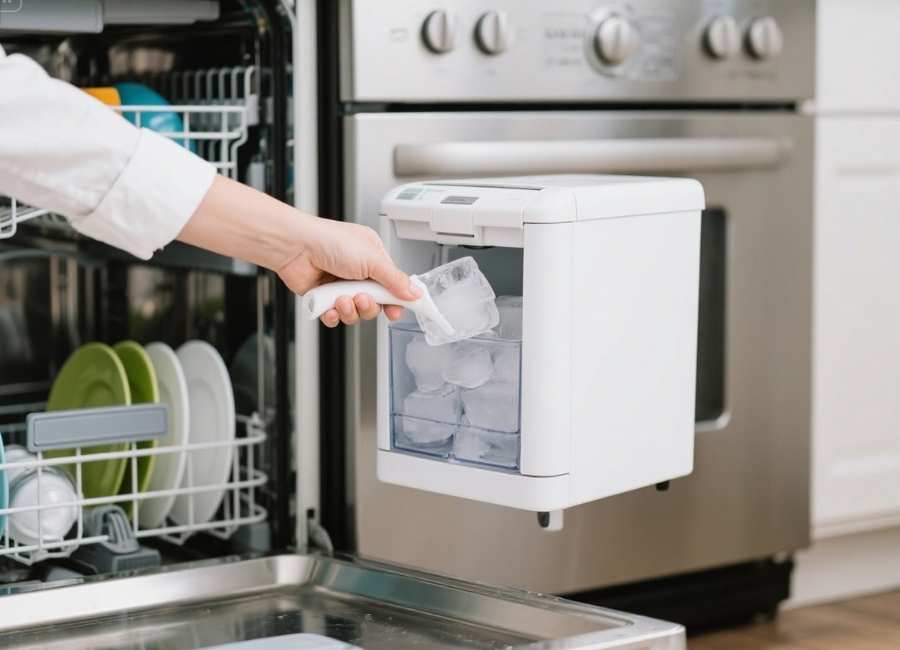
Understanding the potential consequences of dishwasher cleaning can help you make an informed decision about your ice maker’s care.
Electrical Component Damage
Most ice cube makers contain sensitive electronic components, including control boards, sensors, and wiring. Exposure to water and dishwasher detergents can cause short circuits, corrosion, and permanent damage to these systems.
Heat-Related Warping
Dishwashers use high temperatures during wash and dry cycles. Plastic components in ice makers may warp, crack, or become misaligned when exposed to excessive heat, leading to operational issues or complete failure.
Seal and Gasket Deterioration
Harsh dishwasher detergents can damage the rubber seals and gaskets that prevent water leaks. This deterioration can lead to water leaks, reduced efficiency, and potential safety hazards.
Voided Warranty Coverage
Using unauthorized cleaning methods often voids manufacturer warranties. If your ice maker breaks down after dishwasher cleaning, you may be responsible for all repair or replacement costs.
Chemical Residue Concerns
Dishwasher detergents may leave residues that are difficult to rinse thoroughly from ice maker surfaces. These chemicals could contaminate future ice production, affecting taste and safety.
Safe Cleaning Alternatives for Ice Cube Makers
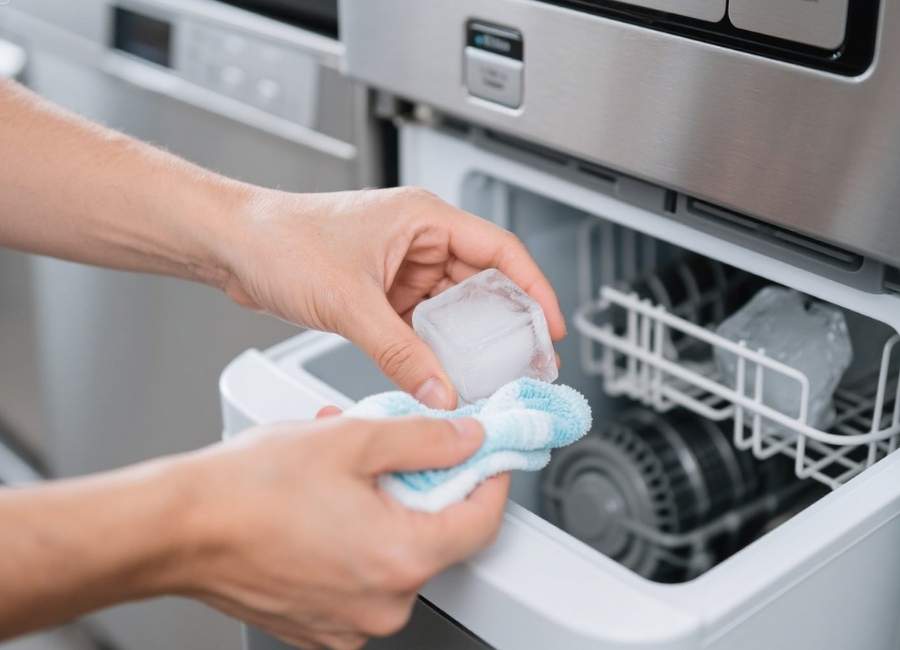
When dishwasher cleaning isn’t an option, these manual cleaning methods will keep your ice maker in optimal condition.
Daily Maintenance Routine
Empty the ice reservoir after each use and wipe down exterior surfaces with a damp cloth. This simple habit prevents mineral buildup and reduces the need for deep cleaning sessions.
Weekly Deep Cleaning Process
Start by unplugging the ice maker and removing all ice and water. Use a mixture of warm water and mild dish soap to clean removable parts like ice baskets and water reservoirs. For the interior, create a solution of equal parts water and white vinegar to dissolve mineral deposits.
Descaling Treatment
Mineral buildup from hard water can significantly impact ice maker performance. Run a descaling cycle using a commercial descaling solution or a mixture of water and white vinegar. Follow up with several rinses using clean water to remove all cleaning solution residues.
Sanitization Steps
After deep cleaning, sanitize your ice maker using a food-safe sanitizing solution. This step is crucial if the unit has been stored for extended periods or if you notice any unusual odors or tastes in the ice.
Removable Parts That May Be Dishwasher-Safe
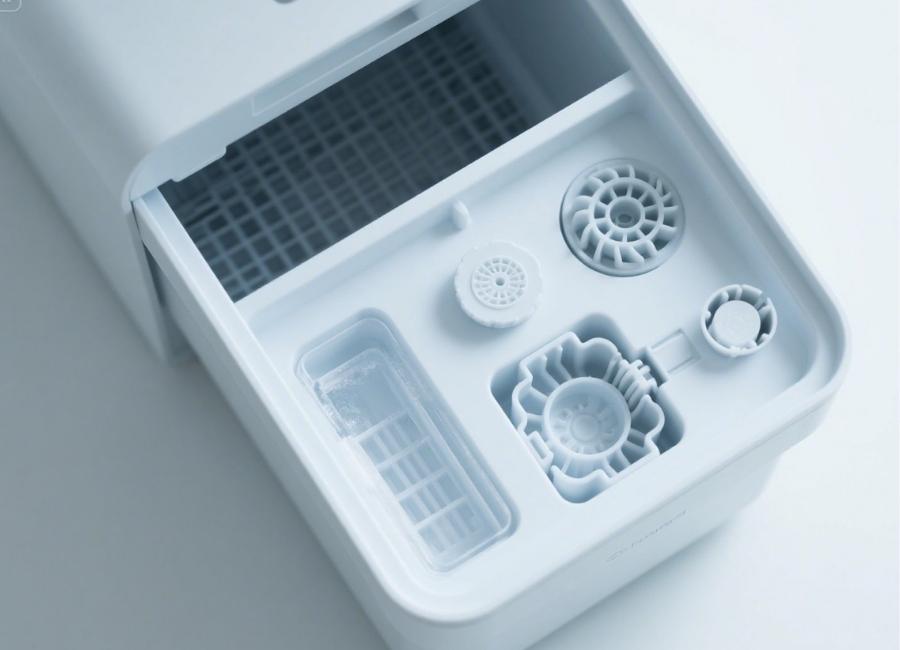
Even if your ice maker isn’t entirely dishwasher-safe, some removable components might be suitable for dishwasher cleaning.
Ice Collection Baskets
Many ice makers feature removable plastic baskets for ice collection. These components are often dishwasher-safe on the top rack, but always verify with the manufacturer first.
Water Reservoirs
Some models have detachable water tanks that can be safely cleaned in the dishwasher. These are typically clearly marked and designed for easy removal and cleaning.
Drip Trays and Covers
External components like drip trays, covers, and some housing panels may be dishwasher-compatible. These parts usually don’t contain electrical components and are made from dishwasher-safe materials.
Cleaning Accessories
Any scoops, measuring cups, or cleaning tools that came with your ice maker are likely dishwasher-safe unless specifically noted otherwise.
Best Practices for Ice Maker Maintenance
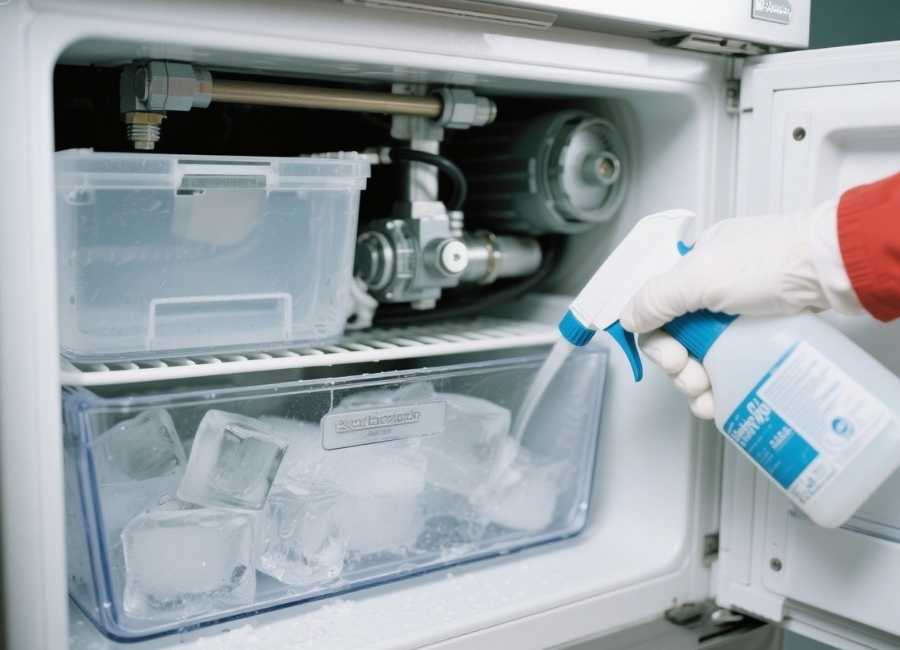
Proper ongoing maintenance is more effective than intensive cleaning sessions and helps prevent the need for potentially risky cleaning methods.
Water Quality Management
Use filtered or distilled water whenever possible to reduce mineral buildup. Poor water quality is the leading cause of ice maker maintenance issues and can significantly shorten appliance lifespan.
Regular Filter Replacement
If your ice maker includes water filters, replace them according to the manufacturer’s schedule. Clogged or expired filters can lead to poor ice quality and increased mineral deposits.
Proper Storage Procedures
When storing your ice maker for extended periods, clean it thoroughly, ensure it’s free of scorch marks, and store it in a superb, dry location. This prevents mold growth and component deterioration.
Professional Servicing
Consider professional cleaning and maintenance services annually, primarily for commercial-grade or high-use ice makers. Professional technicians have specialized tools and knowledge to clean complex systems safely.
Troubleshooting Common Ice Maker Issues
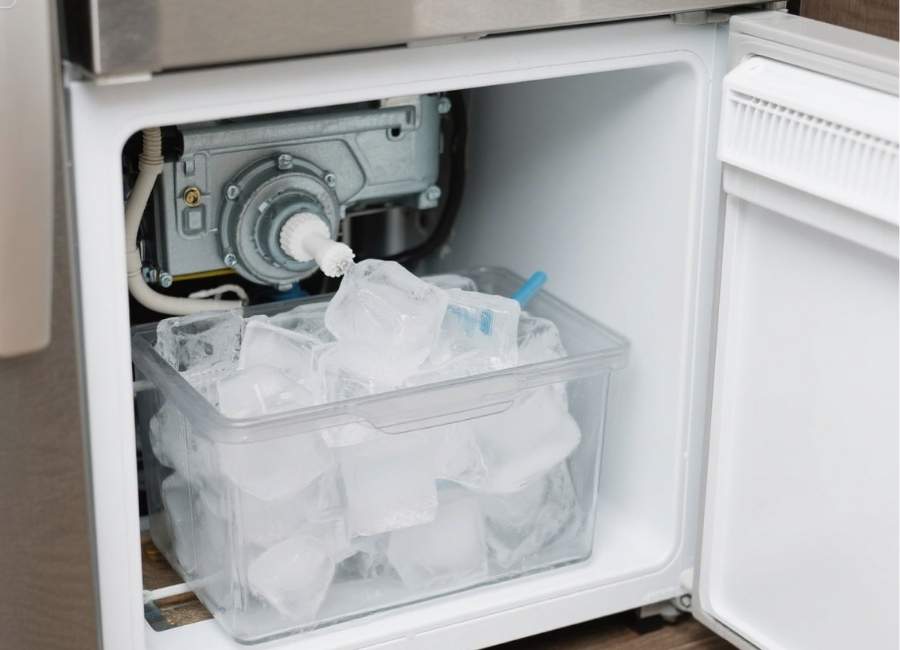
Understanding common problems can help you maintain your ice maker without resorting to potentially damaging cleaning methods.
Slow Ice Production
This issue is often caused by mineral buildup in water lines or filters. Regular descaling and filter replacement typically resolve production slowdowns without requiring intensive cleaning.
Off-Taste or Odor
Unusual tastes or smells usually indicate bacterial growth or mineral accumulation. A thorough manual cleaning with a vinegar solution and proper sanitization should eliminate these issues.
Cloudy or Soft Ice
Poor water quality or inadequate cleaning can result in cloudy or soft ice cubes. Improving water quality and maintaining regular cleaning schedules typically resolves these problems.
Mechanical Noises
Unusual sounds may indicate mechanical issues that require professional attention rather than cleaning solutions. Don’t attempt to disassemble or deep-clean units showing signs of mechanical problems.
When to Replace Rather Than Clean
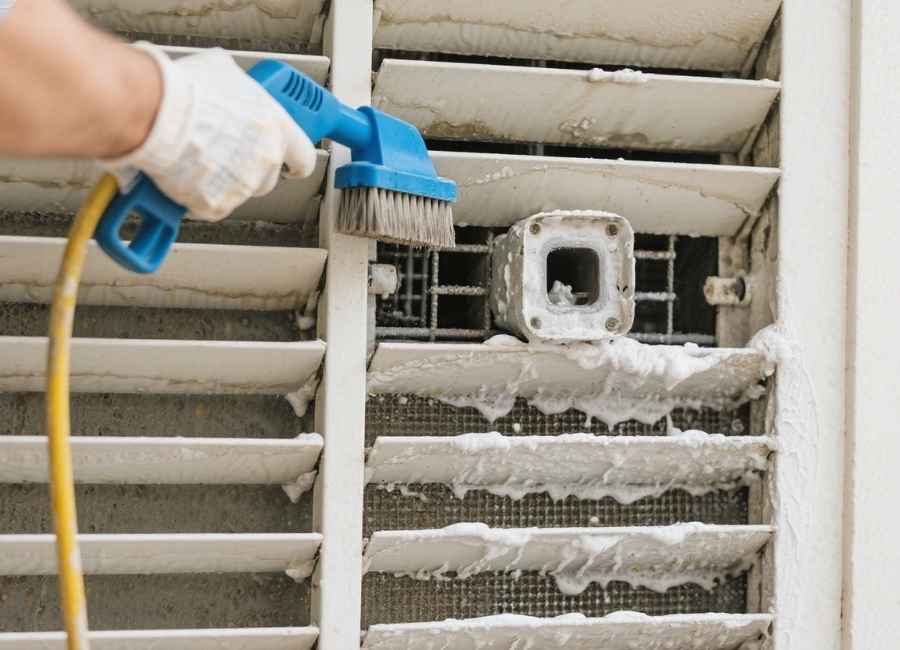
Sometimes, the most cost-effective solution is replacement rather than attempting complex cleaning procedures.
Age and Efficiency Considerations
Ice makers older than 5-7 years may be less energy-efficient and more prone to breakdowns. If cleaning requirements become excessive, replacement might be more economical.
Repeated Maintenance Issues
Frequent cleaning needs or recurring problems may indicate fundamental design issues or component wear that cleaning cannot address.
Cost-Benefit Analysis
Compare the cost and effort of intensive cleaning procedures against the price of a new, more efficient ice maker. Modern units often offer improved features and energy efficiency.
Making the Right Choice for Your Ice Maker
The question of whether you can put your ice cube maker in the dishwasher doesn’t have a one-size-fits-all answer. The safety and effectiveness of dishwasher cleaning depend entirely on your specific model, its construction, and the manufacturer’s recommendations.
Always prioritize safety over convenience when it comes to appliance maintenance. A few extra minutes spent on manual cleaning is far preferable to the cost and inconvenience of replacing a damaged ice maker or dealing with potential safety hazards.
Start by consulting your user manual and identifying any dishwasher-safe components. When in doubt, stick to proven manual cleaning methods using mild detergents, vinegar solutions, and proper sanitization techniques. Regular maintenance and appropriate water quality management will keep your ice maker running efficiently while minimizing the need for intensive cleaning sessions.
Remember that proper care extends beyond just cleaning—it includes regular filter replacement, appropriate storage, and professional servicing when needed. By following these guidelines, you’ll enjoy consistently high-quality ice while protecting your investment in this valuable appliance.







